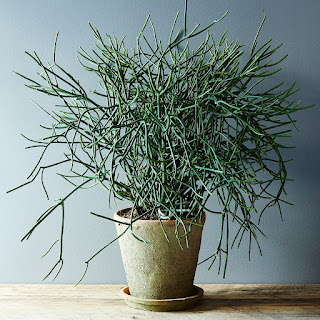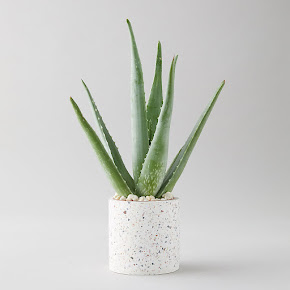As we all adjust to our changing climate, we are forced accept that “unprecedented” weather events are now the new normal. This leaves growers of all types scrambling to figure out what’s best for their plants in this new landscape. Luckily, there are some smart people out there creating effective and innovative solutions to the most common environmental stressors that plants face. These products approach issues like heat, drought, cold and salinity in a variety of ways, but they are almost universally meant to be used proactively. So, while it may be too late to save some plants for damage that has already occurred, it’s never to late to plan for your next planting.
Heat & Drought
I thought about separating this into “Heat” and “Drought”, but products that are good for one are good for the other. These are two-for-ones, if you will.
One of our newest products this year is Mikro H2O. This innovative powdered product introduces two species of Rhizobacteria (Bacillus amyloliquefaciens and Bacillus subtilis) into the soil. They will then secrete natural polymers around the root zone and build biofilm. This biofilm forms a protective shield that holds water and protects the roots from evaporation and other stressors while improving nutrient uptake and essential functions. All this and it’s remarkably cost efficient.

Another product that works in the root zone is NutriRoot®. This liquid combines a gentle 2-2-3 fertilizer with a blend of seaweed extract, nutrients, humic acid, humectants and surfactants. This combination provides nutrition and encourages root development; but, through its humectants, it enables the soil to literally pluck water from the humidity in the air and deliver it to the root zone. This allows for less watering while still maintaining a steady and secure water supply. Hydretain® (which comes in 3 versions) uses the same water management technology as NutriRoot and performs in the same way. This main difference is that Hydretain does not contain the fertilizer. Hydretain’s claim to fame is that it can reduce waterings up to 50%.

We also carry a number of products with water-soluble polymers that hold water and then slowly release it to the plants as needed. In addition to being water-conserving devices, these polymers can condition the soil and improve penetration of water into the soil.
Soil Moist™ Water Aide™ is an organic OMRI-listed version with many application possibilities. Another option we have is pH-neutral
WaterWorks Crystals®. It is as versatile and effective as the Soil Moist option and can reduce waterings up to 75%. The last option I want to mention here is
Plant Keeper. This polymer-based product was developed for use when you need a watering to last extra-long – it will keep the plant good for up to two weeks. This is perfect for when you have travel plans, or it would be great for use with a Christmas tree.
Salinity
A home by the sea is enviable in many ways, but it can be challenging to grow in soil with a high salt content. In truth, you don’t even have to be right by the sea – hurricanes and other storms that brew over the ocean can dump great quantities of salt water many miles inland. While this is not a condition that can be resolved quickly, it is also not hopeless. You just need to commit to the process and be conscientious in treating your soil.
Yucca schidigera is the smart go-to for natural desalination. Yucca extracts reduce salt buildup by reducing dry pocket formation within the soil and increasing permeability of the soil. You can access this valuable commodity in a liquid form by using
Therm X-70® or
SaferGro® Natural Wet®. Both of these are very affordable and have multiple benefits beyond desalination. If you prefer a dry product,
RAW Yucca Flow is an excellent option. It’s fully water soluble and a little goes a very long way.
Water
Too much water is as devastating as too little and, in many ways, it’s harder to come back from. Floodwaters don’t just drown plants outright; they can carry contaminants and pathogens looking for a place to call home. Before you can rebuild your garden, you’ll need to let things dry out and then re-build your soil (more on recovering from too much water in my blog here). When it comes to building soil, we have a great deal to choose from. The following are a few I have chosen to give you an idea of what to consider:
TerraGrow – This OMRI-listed powder is chock-full of seven beneficial microbes as well as important nutrients. TerraGrow can bring nearly any soil back into winning condition. The large size (10 lbs and up) of this product may not work for smaller home growers, but perhaps you can use it as an example of what kind of product to get. We have other similar options that will work for you (look in Soil Amendments, Micronutrients & Biostimulants).
BioAct™ SD – Powered by beneficial microorganisms and humic acid, this organic soluble powder chews through organic matter while supplementing the microbial life. If you have some gnarly fields (or a garden) full of stubble and crop residue after high water, this could be the starting point you need. You will, of course, need to let it all dry out first.
Unleash™ - This liquid inoculant is made with a proprietary blend of both aerobic and anaerobic rhizobacteria to offer multiple plant benefits. These bacteria would work well in a flood-ravaged setting. It was developed for cannabis and hemp cultivation, but it can be used broadly in agriculture. This is not an inexpensive product, but it’s cost per application isn’t bad and the sheer expanse of its uses and benefits make it worth the cost.
VRD™: Volcanic Rock Dust™ - We are really getting back to basics with this item. VRD (or any soil amendments sourced from volcanic rock) are rich in trace and essential minerals that are crucial for healthy soil. This particular amendment has Calcium, Magnesium, Iron, Sodium, and hydrophobic Fulvic Acid (which boosts nutrient acquisition in the soil). Soils treated with VRD receive the minerals in a slow release for long-term, continuous benefits. Volcanoes started the whole soil thing, so rebuilding using volcanic amendments just makes sense.
There is a lot to worry about weather-wise these days, but your garden does not need to be one of those worries. We’ve got you covered in one way or another.
Take Care.
Submitted by Pam
:






























